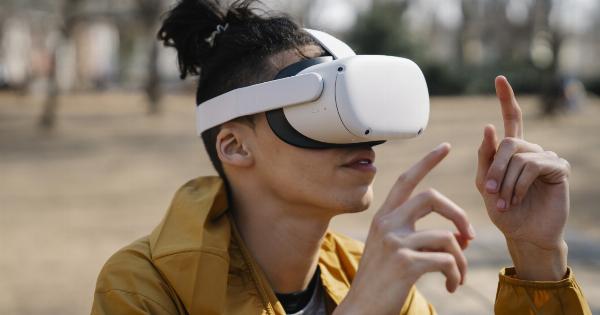Childhood obesity has become a significant public health concern in recent years. According to the World Health Organization, the number of overweight or obese children under the age of five reached 41 million globally in 2016.
With the rise of sedentary lifestyles and unhealthy eating habits, it is essential to explore new technologies that can help prevent and combat childhood obesity. This article discusses ten innovative technologies that show promise in addressing this pressing issue.
1. Wearable Fitness Trackers
Wearable fitness trackers, such as smartwatches, offer an effective way to monitor physical activity levels in children. These devices track step counts, heart rate, calories burned, and sleep patterns, giving insights into overall health and fitness.
By providing real-time feedback and encouraging goal setting, wearable fitness trackers can motivate children to engage in more physical activity and make healthier choices.
2. Interactive Digital Games
Many interactive digital games combine entertainment with physical activity. Platforms like the Nintendo Wii or Xbox Kinect offer a wide range of virtual sports and fitness games that encourage kids to get moving.
These games provide an interactive and engaging way to promote physical activity while making it enjoyable for children.
3. Mobile Apps
Mobile applications geared towards childhood obesity prevention can be valuable resources for both parents and children.
These apps often feature tools for monitoring daily food intake and physical activity, interactive learning modules on healthy habits, and even virtual rewards for achieving goals. Mobile apps can support families in making informed choices and maintaining a healthy lifestyle.
4. Virtual Reality (VR)
Virtual reality (VR) technology opens up possibilities for immersive and active gaming experiences.
VR headsets can transport children into interactive virtual worlds where they can engage in physical activities, such as dancing, boxing, or even exploring fantasy landscapes. By merging physical movement with virtual environments, VR encourages exercise and provides an enjoyable and captivating experience for kids.
5. Online Support Communities
Online support communities play a crucial role in providing a sense of community and support for families tackling childhood obesity.
Through forums, social media groups, and dedicated websites, parents and children can connect with others facing similar challenges. These virtual communities foster motivation, exchange experiences, and share valuable information and resources for managing and preventing childhood obesity.
6. Telemedicine
Telemedicine offers remote healthcare solutions that can enhance childhood obesity prevention efforts.
Through teleconferencing or virtual appointments, healthcare professionals can provide personalized guidance, monitor progress, and offer support without the need for in-person visits. Telemedicine enables easier access to medical expertise, allowing families in remote or underserved areas to receive the necessary guidance for managing childhood obesity.
7. Smart Kitchen Appliances
Smart kitchen appliances equipped with nutritional analysis capabilities can help families make healthier food choices.
These appliances can provide real-time information about the nutritional content of ingredients and suggest healthier alternatives or recipes. By promoting cooking at home and making informed dietary decisions, smart kitchen appliances contribute to preventing childhood obesity.
8. Exergaming
Exergaming combines physical activity with video gaming, encouraging children to move while playing. Specialized exergaming equipment, such as dance pads, motion-sensing mats, or even specialized bikes, enable kids to have fun while exercising.
Exergaming promotes cardiovascular fitness, coordination, and flexibility, offering an enjoyable way to incorporate physical activity into a child’s routine.
9. Augmented Reality (AR)
Augmented reality (AR) technology overlays virtual elements onto the real world, creating interactive and immersive experiences.
AR can be utilized in educational apps or games to teach children about healthy eating, portion control, and the importance of physical activity. By blending virtual objects with the real environment, AR enhances learning and fosters healthy habits.
10. Activity Tracking Social Networks
Activity tracking social networks provide a sense of competition and socialization around physical activity. These platforms allow children to track their exercise routines, share achievements, and connect with friends.
By promoting friendly competition and encouraging social interaction, activity tracking social networks motivate children to engage in more physical activity and lead a healthier lifestyle.




























